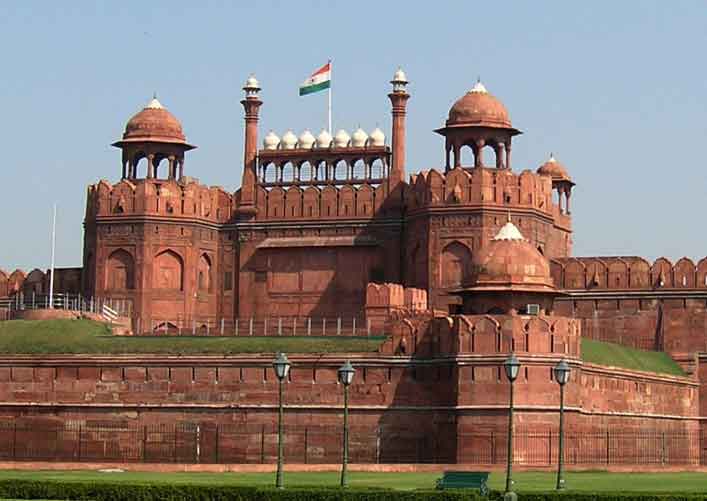Truth to tell, any time is a good time to visit Incredible India. Depending on how ready for adventure you are and your level of preparedness, every time in India has a magic of its own.
Image Source -commons.wikimedia.orgIndia, located in the southern hemisphere, has broadly three seasons. The hot season, which is quite dry, spans March to May, and extends often into mid-June. From June onwards, the dry spell is broken by the monsoons, which are heavy downpours which let up, from time to time, and turn the surrounding leaf-green and fresh. The rainy spell ends around September, when the weather starts getting cooler (while remaining pleasantly temperate and not too near freezing point) in most parts of India. Some places in the upper regions of the Himalayas and mountain areas, get snowfall at this time. This cool and pleasant period lasts for several months, right up to March, when it starts getting warmer again.
Now, it all depends on where you are traveling, and you can enjoy visiting different parts of India at different times, because in such a vast country, different places have different climates. Here are a few pointers that help you to choose the best time to visit India:
The peak tourist Season
The cooler months are usually the peak time for tourist activity, and many top hotpots see footfalls from people around the world. This stretch of months, from September to March, is great to explore those famous places in India, like Taj Mahal in Agra or Khajuraho in Madhya Pradesh that you might be avoiding in summer because of the fiery Indian sun. Incredible India is at its festive best at this time when people get into a holiday mood, and enjoy fairs, theatre and many kinds of community activities. Famous Indian festivals like Dussehra (festival of lights) and Durga Puja (celebrated with grandiose décor and paraphernalia in Mysore and West Bengal, in their different styles) are also part of India’s cool season festive calendar. December sees the famous Hornbill Festival of Nagaland, celebrating its different tribal heritages. Towards the end of winter, in February-March period, the festival of colors, ‘Holi’ is also majorly celebrated in the homes and streets of India, especially the north and the east – with a riot of colors and traditional cultural performances.
Quick tips
In South India, around November and December, you may get some rainy weather, as these parts of India get a second spell of rains from the returning monsoons. Keep an eye on the weather and climate of India forecast and stay prepared with umbrellas or raincoats.
The rainy Season
Monsoons are welcomed with warm relief by Indians, and different places have local ways of celebrating. If you wish to enjoy the wide variety of festivals that go so well with the green flavor of the season, be in India during the rainy season. You need to bear with the muddy roads and slow traffic though. If you are game enough to bear with these inconveniences, you can see some of India’s finest seasonal festivals like the vibrant Nongkrem Dance or the Reh celebrations of Northeast India, or the ‘Ratha Yatra’ a massive celebration of gods on chariots, in Eastern India. The Western Ghats, the forested coastal region fringing West India, comes alive in this season. The lush green forested mountain scapes washed with rain, make tourists flood hill stations like Khandala, Mahabeleshwar and Matheran in droves. In the rainy season, the hillsides often have flash floods or other calamities, Now, If you are planning to visit India so watch out for Indian weather forecasts and updates.
The summer Season
The hill stations of India enjoy huge footfalls during the hot and sultry summer season. Shillong, Shimla, Gangtok, Kodaikanal, Darjeeling the queen of hills and many other hill stations have different activities to woo tourists in these months. The beaches of India, in places like Goa and all down the coast of South India, are also crowded by tourists. In April the Goa Carnival happens just before Eastern Sunday, and is a major event with colorful processions, parades, music and dances. Eastern India gets a few thunderstorms or squalls during the early summer months – stay prepared! With enough hydration and by avoiding the peak afternoon sun, you can enjoy visiting India in the hot months too.
Read :
- Top 10 things to do in Goa
- Family Holidays to Goa
- How to reach Goa by Air, Rail and Road
- Stunning Beaches Of South Goa
India has such a plethora of seasonal festivities and cultural celebrations throughout the year, that whenever you visit, depending on which part you are touring, you have something to explore. Enjoy your Indian holiday!















